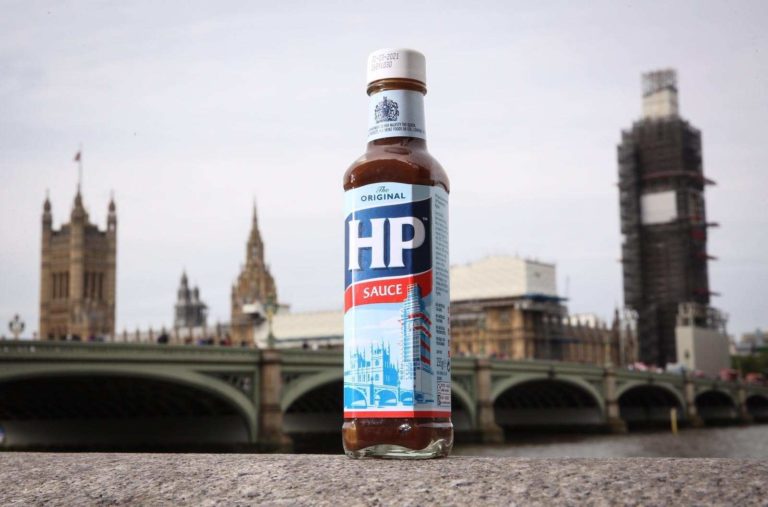HP Sauce is a glorious thing. The French may have their five, gastronomic Mother Sauces but we in this sceptered isle have HP and that’s what counts. Because nobody wants a pool of hollandaise with their Full English.
It first appeared on our dining tables in the late nineteenth century and has since grown to account for three-quarters of sales in our brown sauce market. Its story begins in 1884, when a Nottingham grocer, Frederick Gibson Garton invented the sauce in his pickling factory in New Basford (later also the home of Cussons Imperial Leather soap). It was a classic culinary product of Empire, with tomatoes, tamarind, dates, molasses and soy amongst its ingredients. Then it was simply a case of blending these ‘most delicious oriental fruits and spices with a suitable proportion of pure malt vinegar’ and voilà.
Garton trademarked his tasty concoction in 1890 as ‘The Banquet Sauce’. Lofty ambitions perhaps, but why not?
Garton trademarked his tasty concoction in 1890 as ‘The Banquet Sauce’. Lofty ambitions perhaps, but why not? The sauce should, he thought, have a place on the tables of grand mansions and fine hotels. And indeed, it wasn’t long before Garton heard that his bottled condiments were being served up at the Houses of Parliament no less. He renamed the sauce ‘Garton’s H.P. Sauce’ in apparent tribute.
Sadly for Mr Garton that’s where his part in the story ends. He was deep in debt to a vinegar malting factory, and despite his repeated attempts to brown-nose the debt collector to keep the bailiffs at bay, he was forced to sell his trademarks and recipes for £150, to Birmingham-based manufacturers who owned the Midlands Vinegar Company. The new owners re-launched the sauce in 1903, with the same name and now with a Houses of Parliament lithograph image on the bottle.
By 1940 the sauce was being enjoyed in households across the country, and being eulogised by John Betjeman (‘I pledge her in non-alcoholic wine / And give the HP Sauce another shake.’). In the 60s and 70s it became known as ‘Wilson’s gravy’ after Harold Wilson’s wife gave an interview to The Sunday Times and declared ‘If Harold has a fault, it is that he will drown everything with HP Sauce.’
The former Prime Minister had impeccable taste. HP has the fruity tang of a good chutney, sweetness and vinegariness in perfect balance, a slight smokiness, and a resounding umami mouthfeel. It is also surprisingly versatile as an ingredient: try a squirt in your Bolognese or chilli. In Edinburgh, chippies use HP loosened with vinegar when giving the ‘salt ‘n’ sauce’ treatment.
The brand continued to change hands several times over the years before being acquired by Heinz in 2005. A year later, production moved from Aston to the Netherlands, prompting both a short-lived boycott of Heinz goods, and local Labour MP Khalid Mahmood to brandish a bottle of HP during PMQs. But while it may no longer have been Made in Britain, the Heinz-owned HP was still thoroughly British, marketed as ‘The Official Sauce of Great Britain’ and with the Houses of Parliament still emblazoned on the front.
That image of Parliament on the bottles has evolved over the years. Originally, they showed the full building, with the impressive Victoria Tower in the foreground and Big Ben relegated to the back, in keeping with how the building was generally shown at the time. In the latter part of the twentieth century, the image was modified so that Big Ben—so imprinted on the public consciousness from wartime radio broadcasts—had pride of place. And, in 2019, with the clock tower undergoing repairs, Heinz announced the image would be changing again to show the tower scaffolded over, until the works were complete.
There we have it. A sauce for the nation. And with Brexit done, there is at least a hope that we can revert to arguing over equally serious but more benign matters, like the age-old question of what to put in your bacon butty: ketchup or HP?






Comments